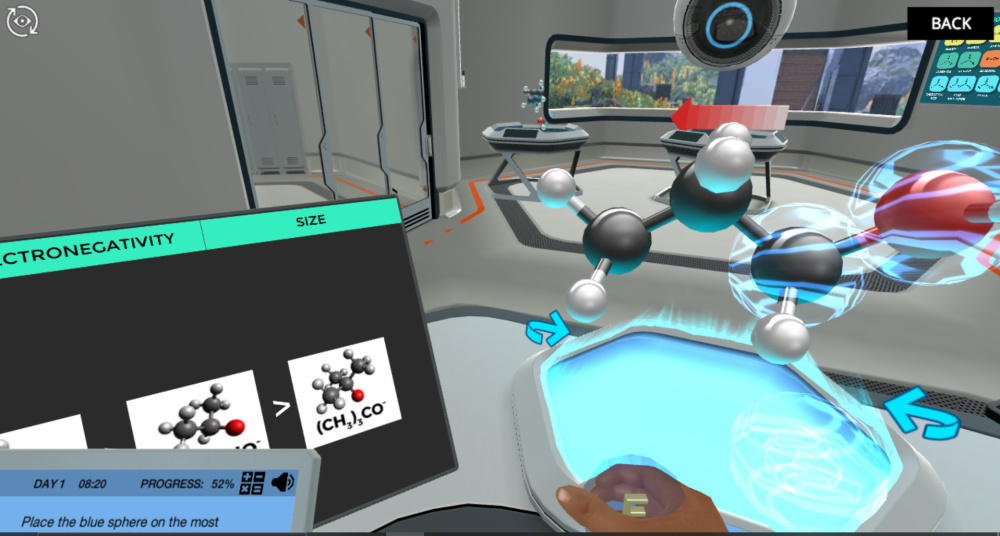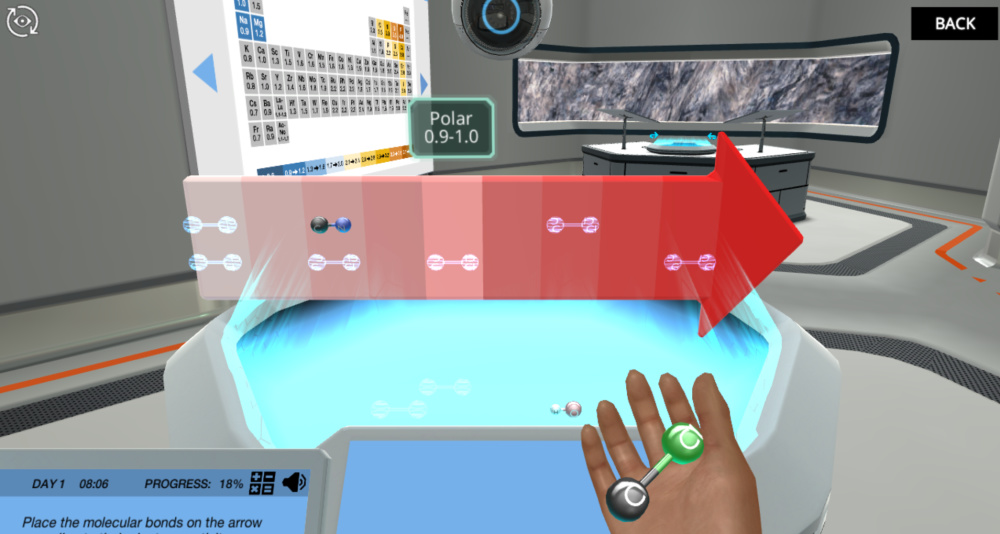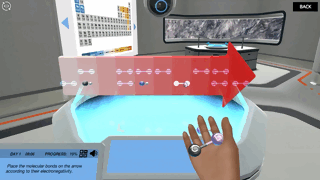
Organic chemistry is a branch of chemistry that studies the structure, chemical reactions, and properties of compounds containing carbon atoms. Generally, organic compounds contain carbon and hydrogen, but they also contain other atoms, including oxygen, nitrogen, sulfur, and halogens. It is a highly creative science because the chemist can explore many compounds and molecules in it.
Electronegativity is the measurement of the tendency of an atom to attract the shared pair of bonding electrons. The atomic number and distance of valence electrons are the two main factors that affect the atom's electronegativity. The most common scale is the Pauling scale which can be helpful for the measurement of electronegativity. Fluorine has the highest electronegativity value, which is 4.0. Carbon shows a 2.55 value of electronegativity.
Lone pair is a pair of electrons present in the outermost shell of an atom that does not participate in any chemical bonding. Lone pair is also known as a non-bonding valence electron.
In organic chemistry reactivity rules, several aspects can be difficult for students to learn. At Labster, we compiled all the complexities students experience while learning about organic chemistry reactivity rules. Then, we provide five methods to make this topic more accessible for students to understand. In the end, we will convince you why a virtual laboratory simulation is effective for teachers to explain the topics to their students.

Figure: An image shows the polarity between carbon and chlorine (C-Cl) from Labster virtual laboratory of organic chemistry reactivity rules.
Three main reasons make organic chemistry reactivity rules a difficult topic for students to understand.
An atom is the smallest particle of any substance that cannot see with the naked eye. The electrons, protons, valence shells, and neutrons are present within the atom. Several more terms can be abstract for students. The reason is that students cannot see them. They cannot see the reaction of two molecules and the formation of the end product. So, they may find it hard to remember the properties of atoms and organic chemistry reactivity rules.
In organic chemistry reactivity rules, students need to not only remember the reactions but also draw the complex reactions between the compounds. Some reactions can be completed in one step. But several reactions in organic chemistry are completed in multiple steps. You need to learn about the substrate, reagent, temperature, and pressure in each reaction. These are important because they can help the reactants to combine and convert into products. Students dislike learning about the organic chemistry reactivity rules because they find this topic boring and time-consuming.
You may be wrong if you think you can learn about organic chemistry reactivity rules by memorizing every reaction. In this topic, you need to remember several reagents, substrates, and reactions that can be challenging for you to remember. The mechanisms of many reactions have some similarities that can be confusing for students. Due to similarities and differences, you cannot memorize thousands of different organic reactions.
As you are familiar with the main reasons that can make organic chemistry reactivity rules difficult to learn. There are five ways to make this topic easier and simpler for students to understand.
Electrophiles are those species that are “electron lovers”. They carry a positive or partially positive charge. You can say that electrophiles are electron deficient and want to get electrons from other molecules. The main point to be remembered is that electrophiles are the acceptors of electrons in an organic reaction. These positive charge-containing molecules can become more stable by accepting the electrons.
Nucleophiles are “nucleus-loving” molecules with a negative or partial negative charge. The reason is that they contain electron pairs to share in forming a chemical bond. These atoms have extra pairs of electrons that can be easily shared with electron-deficient molecules to make the bond. It is important to remember that nucleophiles always act as donors in an organic reaction.
Students should know about organic reactions and their types. Organic reactions are chemical reactions that can occur in organic compounds. The organic reactions are classified into four types.
Substitution reaction
Addition reaction
Radical reaction
Elimination reaction
Substitution reaction: The substitution reaction is a type of organic reaction in which an atom is substituted for another atom. If the new product is an electrophile, the reaction will be an electrophilic substitution. But if the new product of the substitution reaction is a nucleophile, then it is called nucleophilic substitution.
Addition reaction: In the addition reaction, two or more molecules combine to produce the new substance without losing any atom of the reactant. This reaction is most common in alkenes and alkynes.
Radical reaction: Radical reactions are produced when the hydrocarbon reacts with halogens. In this reaction, there are three stages of radical reactions. These stages are initiation, propagation, and termination.
Elimination reaction: Some molecules can be formed by the elimination or removal of the atom. It is called an elimination reaction. In an elimination reaction, several molecules are formed, and small molecules are produced as products.
Lewis structure is the representation of each lone pair in a molecule structure. In 1916, Gilbert N. Lewis introduced the concept of Lewis structure. The single line between two atoms shows a single covalent bond. The double lines between two atoms show a double bond and the triple lines between the two atoms represent a triple bond. The lone pair of electrons can be represented by the dots on the atom. It is an effective way to show the electrons present in the atom's valence shell in a chemical reaction. With the help of this structure, students can easily understand the organic chemistry reactivity rules.
In this structure, all the valence electrons are shown with single dots. The lone pair can be shown with the two dots on an atom.
Steps to draw the Lewis dot structure
Students should know the steps to make the Lewis dot structure. It can help them to write the chemical reactions in an easier way.
The first step is to count all the electrons present in a valence shell.
The atoms with the least electronegativity should write in the center. Other atoms should write around the center atom.
The next step is to connect the atoms with a single bond, a shared electron pair.
Now, you must complete the electrons according to the octet rule at the terminal atoms.
After that, make the bonds of a central atom with the terminal atoms to complete the octet rule of the central atom.
Students will show more interest in learning when they see color diagrams. The diverse colors make tough topics like organic chemistry reactivity rules easier for students to understand. Color diagrams play an effective role in learning because students can memorize them. When students learn about the organic chemistry reactivity rules, they need to learn about many reactions and structures of molecules. It can be helpful for them to memorize these reactions and structures when they see color images.
The color image presented below shows the structure of an organic compound. This structure can be helpful to understand the structure formation of organic compounds. It is important for teachers to show color images of the important topics in the class, so the students can understand the topic appropriately.

Figure: An image of organic compound from Labster virtual laboratory of organic chemistry reactivity rules.
A virtual lab simulation plays an advanced method of explaining complex topics like organic chemistry reactivity rules to the students. It can help students to understand the topic more effectively with the help of video representation. At Labster, we provide 3D simulations that contain gamification elements like storytelling and the scoring system. It will be helpful for students to learn deeply about the organic chemistry reactivity rules.

Labster simulation of organic chemistry reactivity rules explains electronegativity, nucleophile, electrophile, reactions, mechanisms of organic chemistry, fundamental types of reactions, and reactivity of the main functional groups. It means that students will know about all the important concepts regarding organic chemistry reactivity rules after learning through this simulation.
Check out Labster organic chemistry reactivity rules simulation here, or get in touch to find out how you can start using virtual lab simulations with your students.

Labster helps universities and high schools enhance student success in STEM.
Request DemoRequest a demo to discover how Labster helps high schools and universities enhance student success.
Request Demo